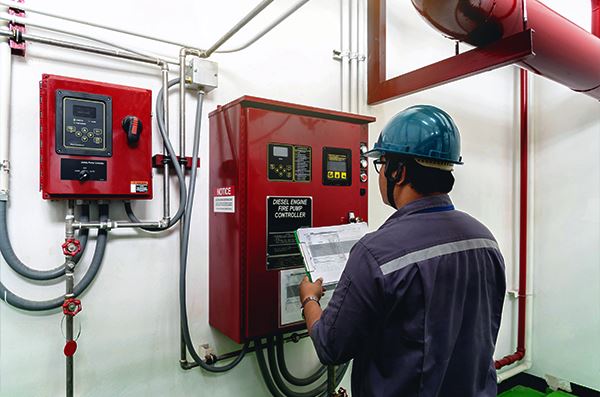Home / Articles / What does an engineer do in the field of fire extinguishing, smoke removal, warning and alarm systems
What does an engineer do in the field of fire extinguishing, smoke removal, warning and alarm systems

An engineer working in the field of fire extinguishing, smoke removal, warning and alarm systems plays a key role in ensuring the safety of buildings and structures. His work includes many aspects, ranging from the design and installation of systems to their regular maintenance and repair. Let’s look at the main responsibilities and tasks that this specialist faces.
Design of security systems
One of the main stages of an engineer’s work is the design of security systems. At this stage, the engineer analyzes the characteristics of the building, its layout, purpose and possible risks. He develops project documentation, including drawings, diagrams and technical descriptions. It is important to take into account all regulatory requirements and standards to ensure the effectiveness and reliability of the system. The selection of equipment and materials is also part of the design: the engineer selects the devices that will be optimally suited for a particular facility.
Installation and installation of equipment
After completing the design, the engineer proceeds to the stage of installation and installation of systems. Here he can perform both organizational and direct work. The engineer coordinates the work of the installers, ensures the correct installation of equipment such as fire detectors, sprinklers, pumps and smoke extraction fans. He also ensures that all components of the system are installed in accordance with the design documentation and regulatory requirements.
Maintenance and repair
To ensure the smooth operation of fire extinguishing, smoke removal and warning systems, the engineer conducts regular maintenance. This includes equipment health checks, system testing, and replacement of worn or damaged components. The engineer also carries out repair work in case of malfunctions. Preventive maintenance helps to prevent many problems and ensure that the system is ready for action in the event of an emergency.
Training and consulting
The engineer can also provide training for the staff working in the building. He explains how to use the system correctly, what actions to take in the event of a fire or other emergency. The consultation may include recommendations to improve safety and minimize risks.
Control of compliance with regulations
All systems designed and installed by the engineer must comply with applicable regulations and safety standards. The engineer conducts inspections and audits of systems for compliance with legislative requirements, prepares reports and documentation for regulatory authorities. This is an important aspect of the work, as non-compliance with standards can lead to fines and, more importantly, to a decrease in security.
Innovation and system improvement
Modern technologies are constantly evolving, and an engineer in the field of fire extinguishing, smoke removal, warning and alarm systems should be aware of the latest trends and innovations. He studies new technologies, materials and methods, implements improvements to existing systems. This may include installing more efficient equipment, integrating systems with modern automation and control tools.
Conclusion
The work of an engineer in this field requires in-depth knowledge in the field of fire safety, electronics, mechanics and automation. This specialist is responsible for protecting people’s lives and property, which makes his work extremely important and responsible. An engineer should be attentive to details, well versed in regulatory requirements and be ready for continuous training and improvement of their skills.
23.05.2024
531 👁